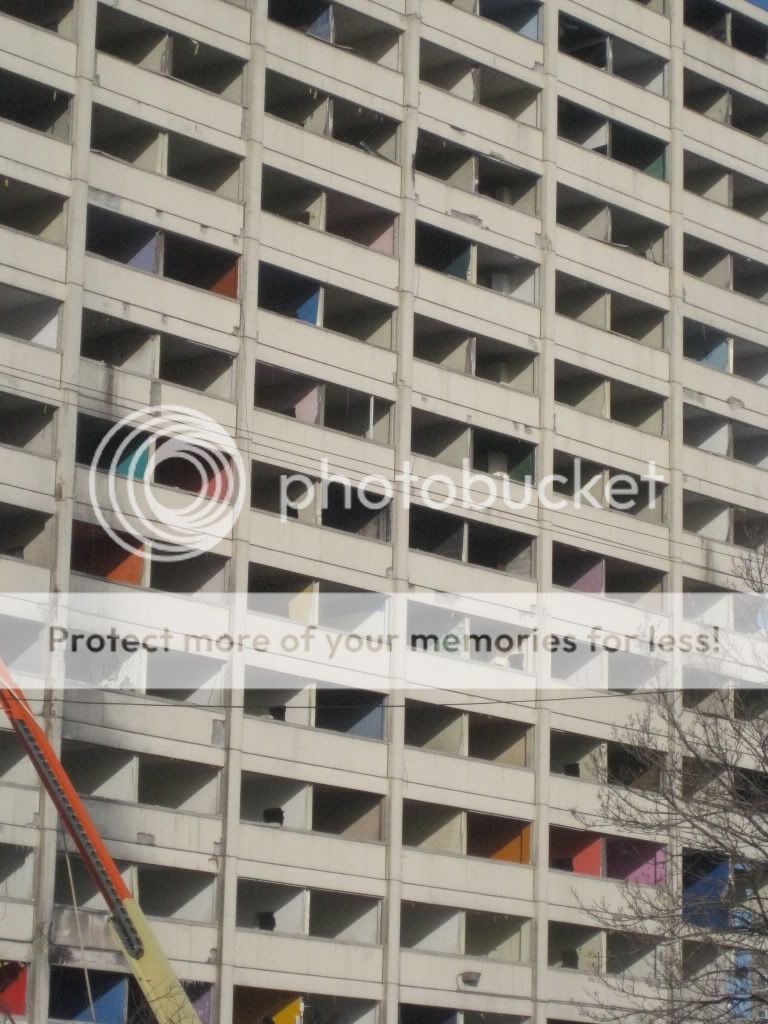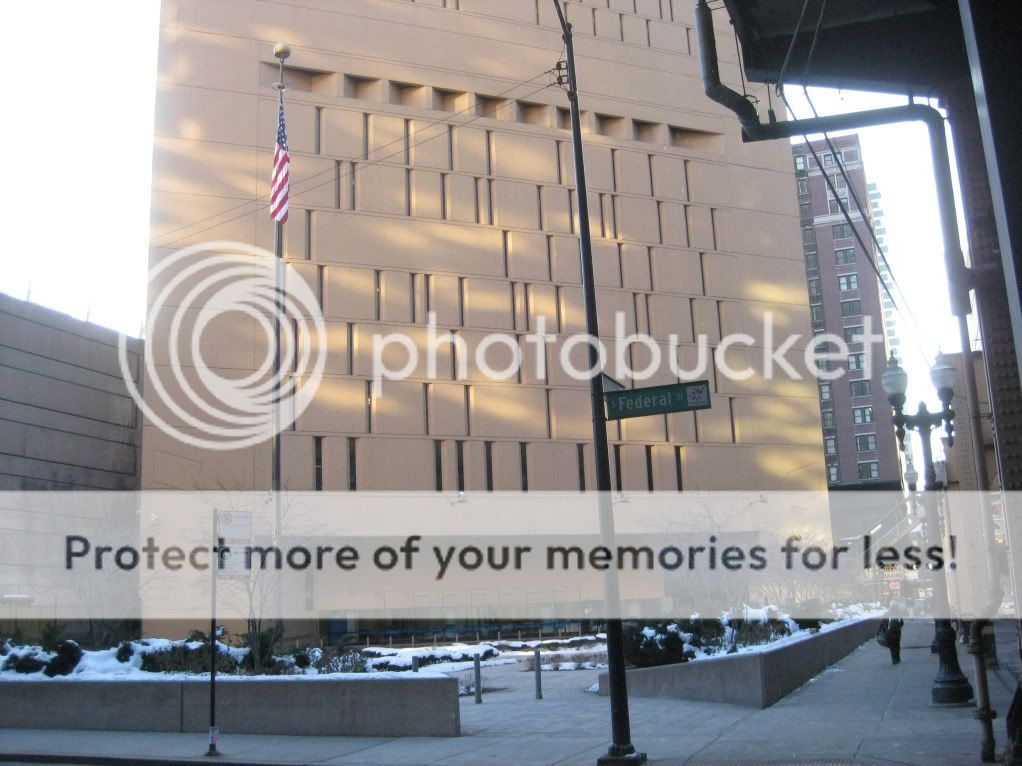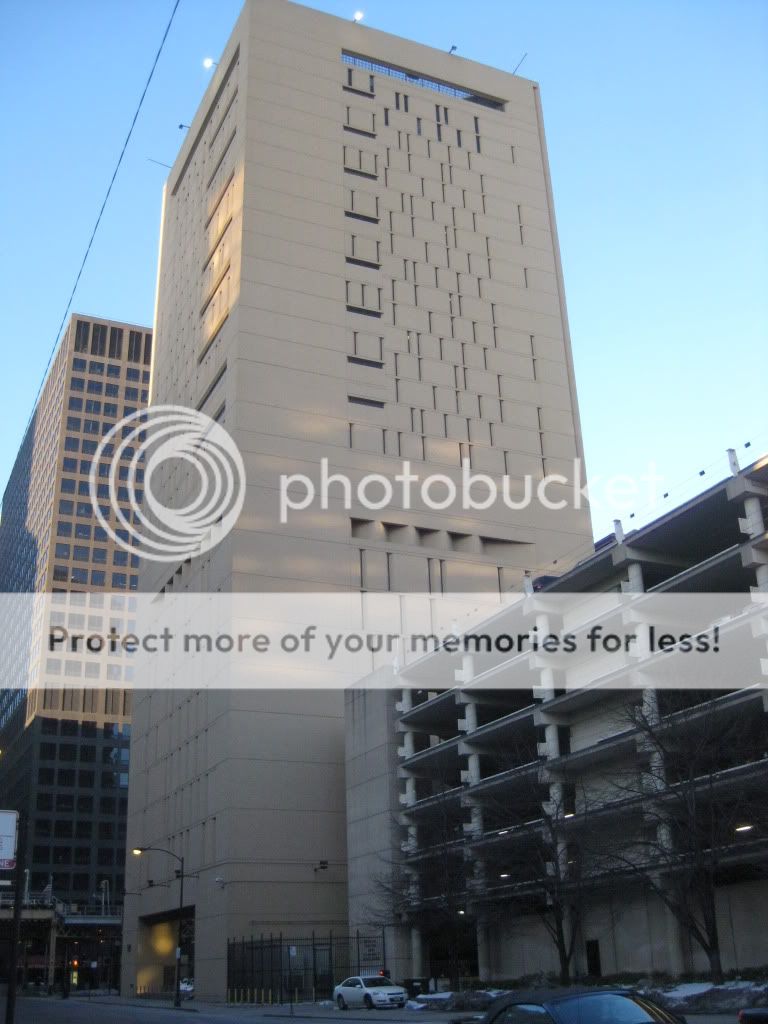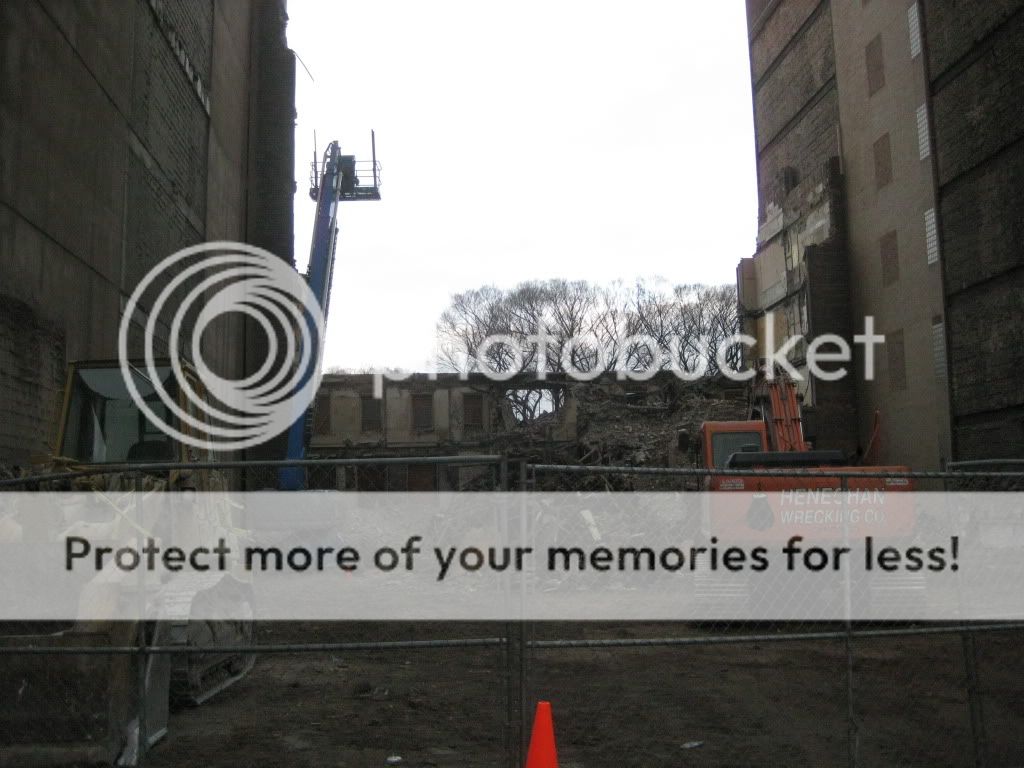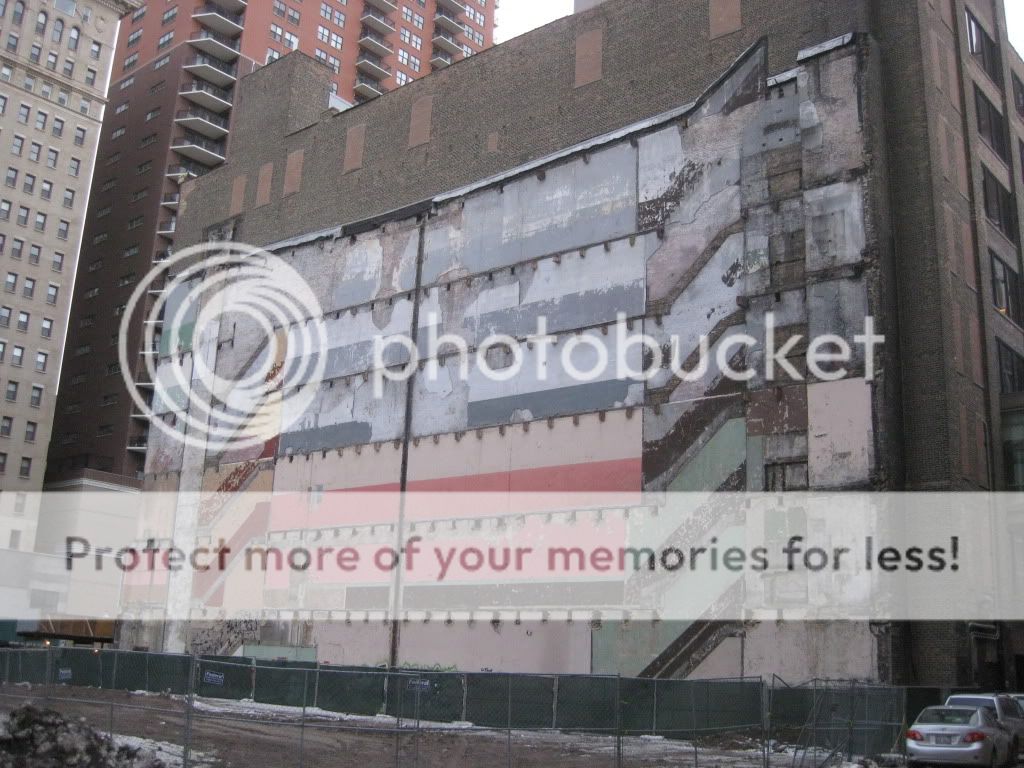In January, one of the last of the Whites at Cabrini-Green fell to the forces of "progress," just northeast of Halsted & Division. These photos give a glimpse inside one of the notorious buildings, from a perspective we couldn't have seen while they were in operation. It's pretty fascinating the colors that people painted their apartments to make what were pretty dismal quarters more bearable. The icicles add to the composition. These photos were taken by a friend who has a more artistic eye than I, so don't hold me to that standard :-)
Friday, March 12, 2010
Posted by Posted by
The Loosh
at
7:00 AM
Categories:
0
comments
Tuesday, March 9, 2010
One of Chicago's most under-appreciated architects is Harry Weese. He was a modernist but he fell in his own mold, far apart from the conformist followers of Mies van der Rohe or the rebellion of Bertrand Goldberg. His influences came from studying under Eero Saarinen and physically visiting the work of Alvar Aalto while in Scandinavia. Weese is often pegged as a brutalist, but his work actually spans many styles. He was also a pioneer in several ways in the city. For example, he was among its first preservation architects, as his firm carried out the first restoration of Louis Sullivan's Auditorium Building.
One of Weese's most well-known works, and one of my favorite, is Chicago's city jail, the Metropolitan Correctional Center. It is a 27-story triangular building located along the 'L' tracks just south of the Loop at Van Buren and Clark Streets. Completed in 1975, it was intended to be one of America's first jails without bars. Its design supported this ambitious agenda by dividing the prisoners up onto different floors by the seriousness of their offense and making the whole floor viewable from a central location. Weese also designed the windows to be five inches wide and high enough off the street (the cells are on the upper floors) that escape would be impossible. Using an elevator for prisoner transport is a good idea because it helps eliminate the risks to guards in transporting prisoners long horizontal distances.
The jail itself is unabashedly brutalist and was even more so before the previously raw concrete was painted tan around 2005. The complex also includes a brutalist parking garage next door and a garden along the building's southeast facade.
Relating to Weese's growing respect for the historic integrity of the South Loop (Weese would begin the process to revitalize Printer's Row three years later,) the jail shows deference to the historic buildings around it within its form. The Fisher, Old Colony, and Manhattan buildings face the jail along its east side, and have a fairly consistent cornice line. The tenth floor of the jail is left blank (it is a mechanical floor) at the same level. A subtle gesture, but an intended one.
In case you are interested in Weese's work, here are a couple of the books available on him. There are a few more, but these are the most accessible.
Harry Weese Houses by Kitty Baldwin Weese. Chicago: Chicago Review Press, 1987.
Harry Weese: Humanism and Tradition. Process Architecture No. 11. Katushiko Ichinowatari, ed. Tokyo: Process Architecture, 1979.
Probably the best source on him, though, is his oral history taken as part of the Chicago Architects Oral History Project by the Art Institute of Chicago. The oral histories of his brother, Ben Weese, and his long-time employee, Jack Hartray, also contain large sections about the man, his work, and his firm. For a time in the 1970s and 1980s, Harry Weese Associates was among the most prolific firms in Chicago. While Harry Weese died in 1998, both Ben Weese and Jack Hartray are still alive.
Posted by Posted by
The Loosh
at
7:00 AM
Categories:
0
comments
Friday, March 5, 2010
It's kind of flown under the radar, but if's you've walked down Michigan Avenue in the last week or so, you might have noticed a gaping hole in the famous streetwall. Located at 830 South Michigan, the hole was filled by the YWCA Building, a grand blue Beaux-Arts facade that for the last three decades has stood with blank eyes onto Grant Park. Before that, though, from when it was built in 1895, it was an affordable housing building for young women new to the city. You can still see where the light wells were in the floor plan by noticing where the neighboring buildings were clad or left raw. A second story open space above the front entrance looked out onto the lake. From 1929 until its abandonment, the building was used as a hotel. It apparently had some pretty major structural issues as well as severe degradation, as even landmarks organizations wrote it off as unsalvagable. Cool building, though. I might be in the minority here, but I kind of liked the blue-gray paint.
The building was condemned November 12, and demolition began in January. All that remains now is the facade of the first two floors.
(First image credit: Landmarks Illinois)
Posted by Posted by
The Loosh
at
7:00 AM
Categories:
0
comments
Wednesday, March 3, 2010
Sometimes "textures" are things that you seek out in a city, things are only visible when you are looking for them. A reward for those who seek the unexpected. Other times, "textures" are pretty obvious. What was once a building between 8th and 9th Streets on Wabash, is now a parking lot. But it leaves behind the ghost of what it formerly was. The ghost image is a "living section" of what, it seems, was a timber-frame loft building of six stories. Still, I love looking at the silhouette. From it, you can immediately learn more about a building than you would normally be able to learn, even from working within it everyday.
The story is actually that there were two buildings here (the two on the right end of the block in the Google StreetView image below.) They had some sort of code issues and East-West University, rather than worry about remodeling them, just decided to tear them down. They weren't historic or anything, so they could just do that. Funny how that surprises me these days. It's a little annoying, just because the South Loop already has so many parking lots and so more were really not necessary. And, given the economy, redevelopment in the near term is unlikely.
Posted by Posted by
The Loosh
at
10:07 PM
Categories:
0
comments

